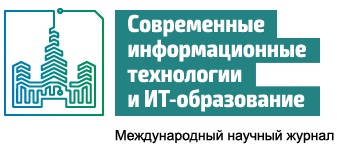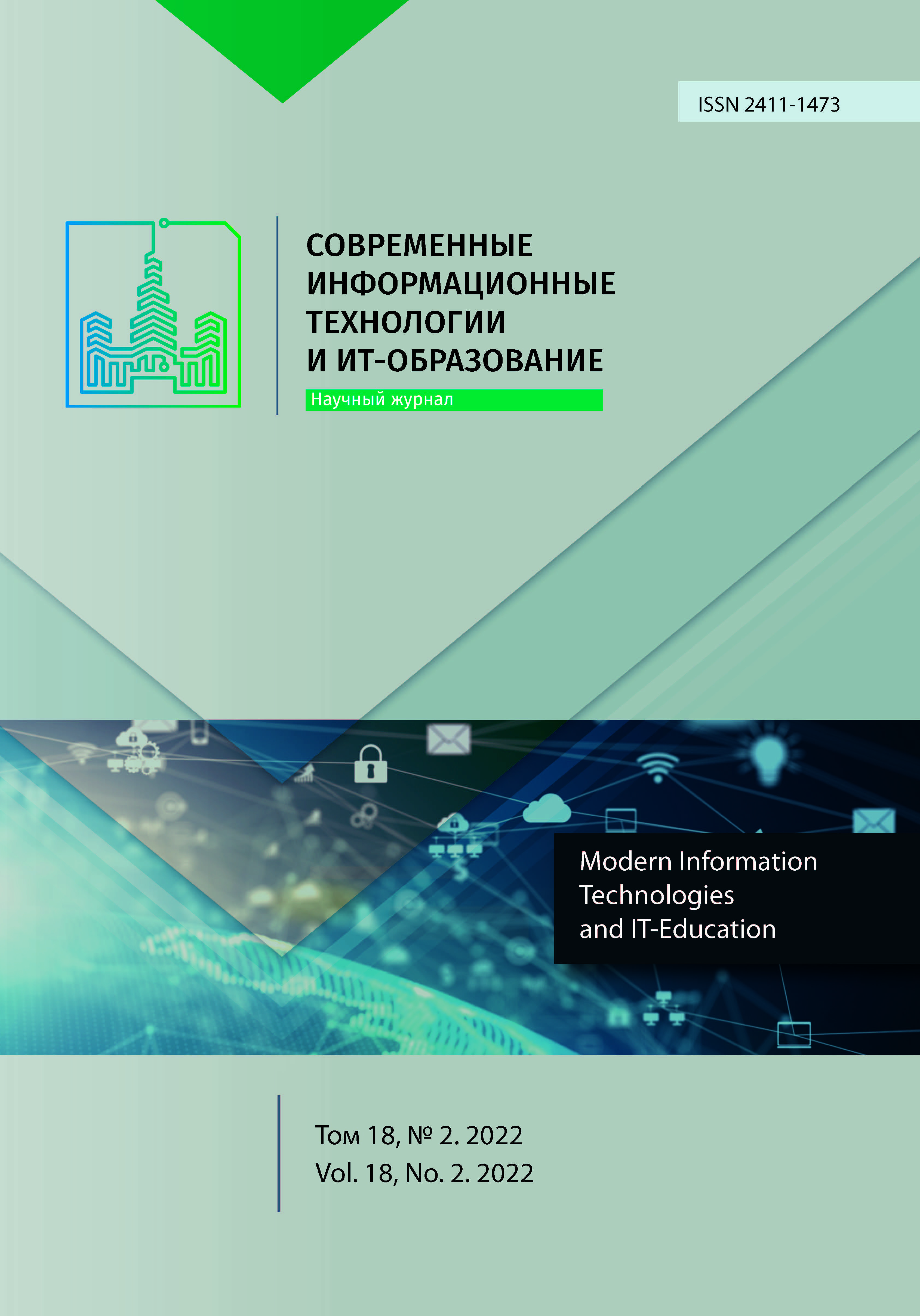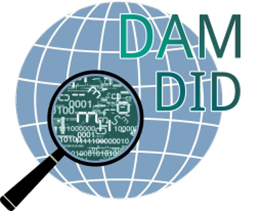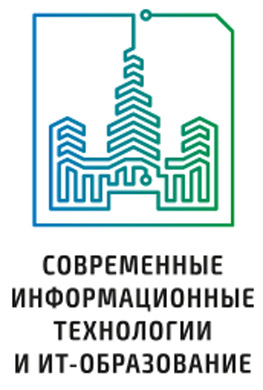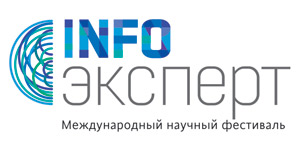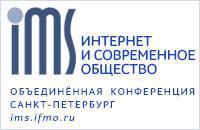Алгебра конечных автоматов как математическая модель цифрового двойника умного производства
Аннотация
Статья посвящена разработке алгебры конечных автоматов специального вида DTA (Digital Twin Algebra), предназначенной для математического моделирования поведения цифровых двойников производства. Основное внимание уделяется изучению операций композиции де-терминированных конечных автоматов, позволяющих строить модели составных активов из более простых. В алгебру DTA включены как общеизвестные операции, например, операция прямого произведения автоматов и операция суперпозиции автоматов, так и вновь введенные операции, включая: операции группирования конечных автоматов в параллельный блок, груп-пирования иерархической структуры, системной композиции, ассоциации между автоматами, рекурсивного вызова автомата, асинхронного вызова автомата.Предложенныйматематиче-ский аппарат может использоваться для разработки формальных моделей физических активов производства, их цифровых двойников, а также моделей поведения киберфизических систем, включающих как физические, так и виртуальные активы.
Литература
2. Mittal S., Khan M.A., Romero D., Wuest T. Smart manufacturing: Characteristics, technologies and enabling factors. Proceedings of the Institution of Mechanical Engineers, Part B: Journal of Engineering Manufacture. 2019; 233(5):1342-1361. (In Eng.) doi: https://doi.org/10.1177/0954405417736547
3. Grieves M., Vickers J. Digital Twin: Mitigating Unpredictable, Undesirable Emergent Behavior in Complex Systems. In: Kahlen J., Flumerfelt S., Alves A. (eds.) Transdisciplinary Perspectives on Complex Systems. Springer, Cham; 2017. p. 85-113. (In Eng.) doi: https://doi.org/10.1007/978-3-319-38756-7_4
4. Lim K.Y.H., Zheng P., Chen C.H. A state-of-the-art survey of Digital Twin: techniques, engineering product lifecycle management and business innovation perspectives. Journal of Intelligent Manufacturing. 2020; 31(6):1313-1337. (In Eng.) doi: https://doi.org/10.1007/s10845-019-01512-w
5. Cheng Y., Yongping Z., Ping J., Wenjun X., Zude Z., Tao F. Cyber-physical integration for moving digital factories forward towards smart manufacturing: a survey. International Journal of Advanced Manufacturing Technology. 2018; 97(1-4):1209-1221. (In Eng.) doi: https://doi.org/10.1007/s00170-018-2001-2
6. Jacoby M., Usländer T. Digital Twin and Internet of Things ‒ Current Standards Landscape. Applied Sciences. 2020; 10(18):6519. (In Eng.) doi: https://doi.org/10.3390/app10186519
7. Souza V., Cruz R., Silva W., Lins S., Lucena V. A Digital Twin Architecture Based on the Industrial Internet of Things Technologies. 2019 IEEE International Conference on Consumer Electronics (ICCE). IEEE Computer Society; 2019. p. 1-2. (In Eng.) doi: https://doi.org/10.1109/ICCE.2019.8662081
8. Jacoby M., Jovicic B., Stojanovic L., Stojanović N. An Approach for Realizing Hybrid Digital Twins Using Asset Administration Shells and Apache StreamPipes. Information. 2021; 12(6):217. (In Eng.) doi: https://doi.org/10.3390/info12060217
9. Haskamp H., Orth F., Wermann J., Colombo A.W. Implementing an OPC UA interface for legacy PLC-based automation systems using the Azure cloud: An ICPS-architecture with a retrofitted RFID system. 2018 IEEE Industrial Cyber-Physical Systems (ICPS). IEEE Computer Society; 2018. p. 115-121. (In Eng.) doi: https://doi.org/10.1109/ICPHYS.2018.8387646
10. Liu Y., Peng Y., Wang B., Yao S., Liu Z. Review on cyber-physical systems. IEEE/CAA Journal of Automatica Sinica. 2017; 4(1):27-40. (In Eng.) doi: https://doi.org/10.1109/JAS.2017.7510349
11. Glushkov V.M. The Abstract Theory of Automata. Russian Mathematical Surveys. 1961; 16(5):1-53. (In Eng.) doi: https://doi.org/10.1070/RM1961v016n05ABEH004112
12. Lu V.Q., et al. Developing a Dynamic Digital Twin at a Building Level: using Cambridge Campus as Case Study. International Conference on Smart Infrastructure and Construction 2019 (ICSIC): Driving data-informed decision-making. ICE Publishing; 2019. p. 67-75. (In Eng.) doi: https://doi.org/10.1680/icsic.64669.067
13. Vrabič R., Erkoyuncu J.A., Butala P., Roy R. Digital twins: Understanding the added value of integrated models for through-life engineering services. Procedia Manufacturing. 2018; 16:139-146. (In Eng.) doi: https://doi.org/10.1016/j.promfg.2018.10.167
14. Shen W., Hao Q., Xue Y. A loosely coupled system integration approach for decision support in facility management and maintenance. Automation in Construction. 2012; 25:41-48. (In Eng.) doi: https://doi.org/10.1016/j.autcon.2012.04.003
15. Luo W., Hu T., Ye Y., Zhang C., Wei Y. A hybrid predictive maintenance approach for CNC machine tool driven by Digital Twin. Robotics and Computer-Integrated Manufacturing. 2020; 65:101974. (In Eng.) doi: https://doi.org/10.1016/j.rcim.2020.101974
16. Abburu S., Berre A.J., Jacoby M., Roman D., Stojanovic L., Stojanovic N. COGNITWIN – Hybrid and Cognitive Digital Twins for the Process Industry. 2020 IEEE International Conference on Engineering, Technology and Innovation (ICE/ITMC). IEEE Computer Society; 2020. p. 1-8. (In Eng.) doi: https://doi.org/10.1109/ICE/ITMC49519.2020.9198403
17. Hamilton F., Lloyd A.L., Flores K.B. Hybrid modeling and prediction of dynamical systems. PLOS Computational Biology. 2017; 13(7):e1005655. (In Eng.) doi: https://doi.org/10.1371/journal.pcbi.1005655
18. Corallo A., Del Vecchio V., Lezzi M., Morciano P. Shop Floor Digital Twin in Smart Manufacturing: A Systematic Literature Review. Sustainability. 2021; 13(23):12987. (In Eng.) doi: https://doi.org/10.3390/su132312987
19. Aheleroff S., Xu X., Zhong R.Y., Lu Y. Digital Twin as a Service (DTaaS) in Industry 4.0: An Architecture Reference Model. Advanced Engineering Informatics. 2021; 47:101225. (In Eng.) doi: https://doi.org/10.1016/j.aei.2020.101225
20. Sepasgozar S.M.E. Differentiating Digital Twin from Digital Shadow: Elucidating a Paradigm Shift to Expedite a Smart, Sustainable Built Environment. Buildings. 2021; 11(4):151. (In Eng.) doi: https://doi.org/10.3390/buildings11040151
21. Chinesta F., Cueto E.G., Abisset-Chavanne E., Duval J.L., Khaldi F.E. Virtual, Digital and Hybrid Twins: A New Paradigm in Data-Based Engineering and Engineered Data. Archives of Computational Methods in Engineering. 2020; 27(1):105-134. (In Eng.) doi: https://doi.org/10.1007/s11831-018-9301-4
22. Rasheed A., San O., Kvamsdal T. Digital Twin: Values, Challenges and Enablers From a Modeling Perspective. IEEE Access. 2020; 8:21980-22012. (In Eng.) doi: https://doi.org/10.1109/ACCESS.2020.2970143
23. Redelinghuys A.J.H., Basson A.H., Kruger K. A six-layer architecture for the digital twin: a manufacturing case study implementation. Journal of Intelligent Manufacturing. 2020; 31(6):1383-1402. (In Eng.) doi: https://doi.org/10.1007/s10845-019-01516-6
24. Schluse M., Priggemeyer M., Atorf L., Rossmann J. Experimentable Digital Twins ‒ Streamlining Simulation-Based Systems Engineering for Industry 4.0. IEEE Transactions on Industrial Informatics. 2018; 14(4):1722-1731. (In Eng.) doi: https://doi.org/10.1109/TII.2018.2804917
25. Tsinarakis G., Sarantinoudis N., Arampatzis G. A Discrete Process Modelling and Simulation Methodology for Industrial Systems within the Concept of Digital Twins. Applied Sciences. 2022; 12(2):870. (In Eng.) doi: https://doi.org/10.3390/app12020870

Это произведение доступно по лицензии Creative Commons «Attribution» («Атрибуция») 4.0 Всемирная.
Редакционная политика журнала основывается на традиционных этических принципах российской научной периодики и строится с учетом этических норм работы редакторов и издателей, закрепленных в Кодексе поведения и руководящих принципах наилучшей практики для редактора журнала (Code of Conduct and Best Practice Guidelines for Journal Editors) и Кодексе поведения для издателя журнала (Code of Conduct for Journal Publishers), разработанных Комитетом по публикационной этике - Committee on Publication Ethics (COPE). В процессе издательской деятельности редколлегия журнала руководствуется международными правилами охраны авторского права, нормами действующего законодательства РФ, международными издательскими стандартами и обязательной ссылке на первоисточник.
Журнал позволяет авторам сохранять авторское право без ограничений. Журнал позволяет авторам сохранить права на публикацию без ограничений.
Издательская политика в области авторского права и архивирования определяются «зеленым цветом» в базе данных SHERPA/RoMEO.
Все статьи распространяются на условиях лицензии Creative Commons «Attribution» («Атрибуция») 4.0 Всемирная, которая позволяет другим использовать, распространять, дополнять эту работу с обязательной ссылкой на оригинальную работу и публикацию в этом журналe.
